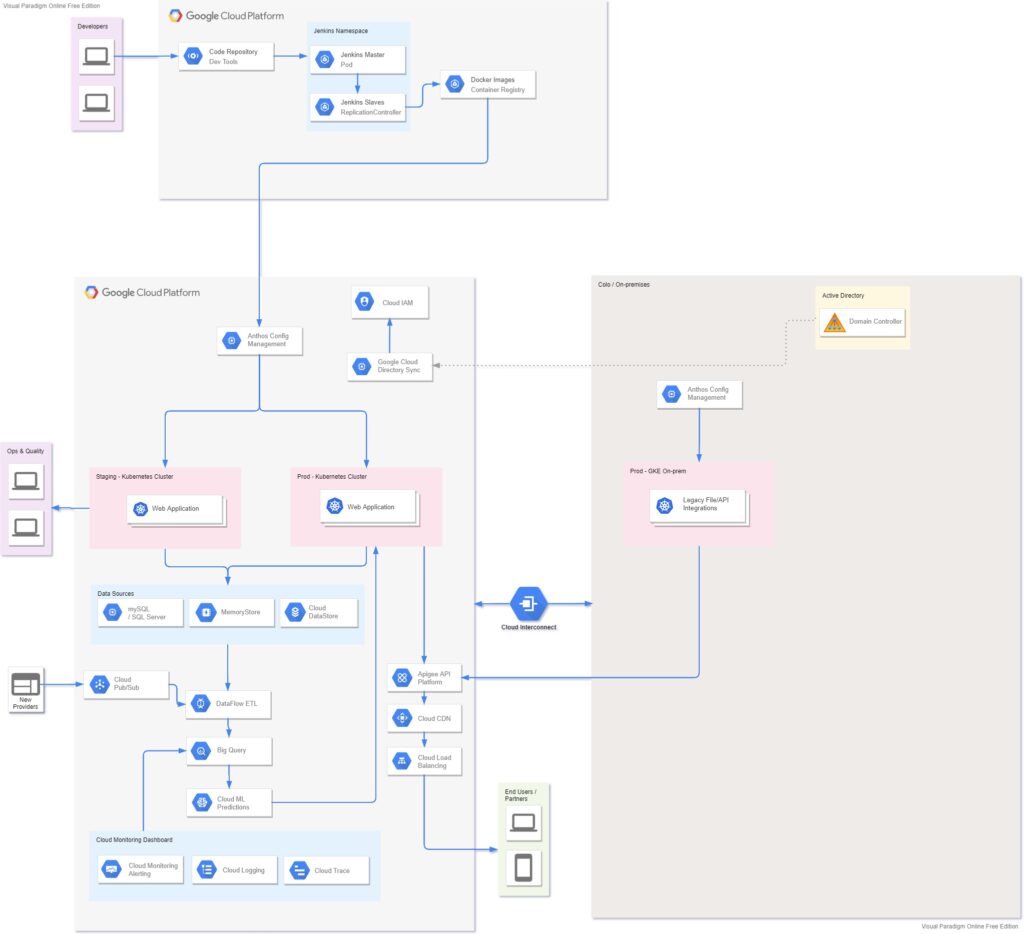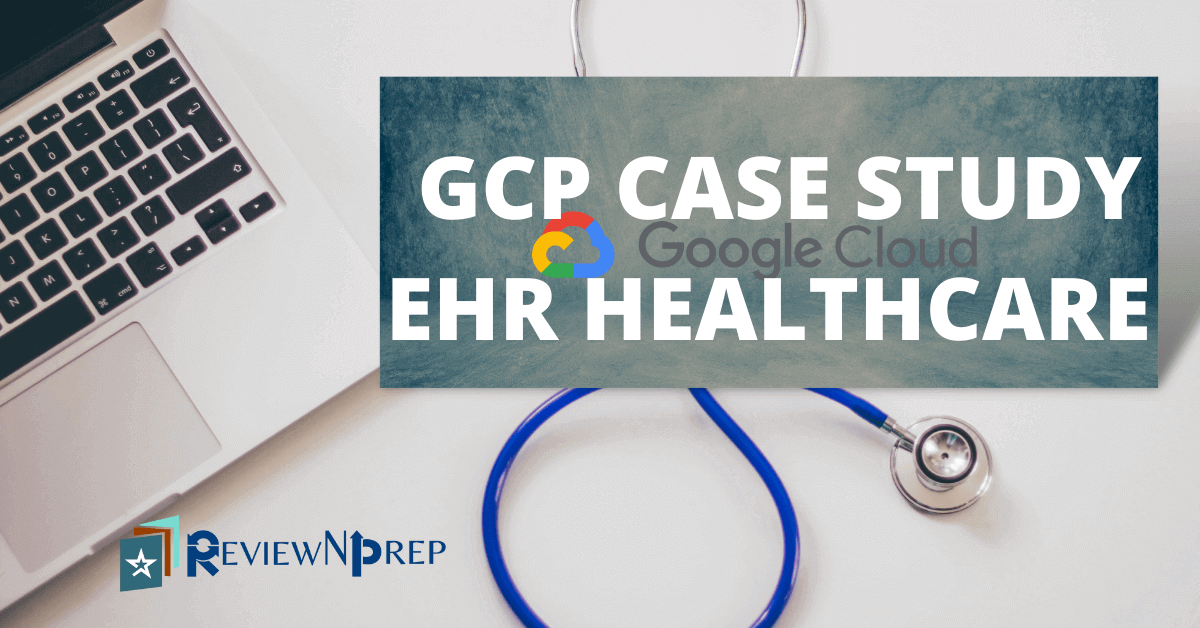|
|
What is EHR Healthcare ?
Electronic Health Record (EHR) is a Software-as-a-Service offering from EHR healthcare company. It provides their services to hospitals, global medical offices and third-party insurance companies worldwide. The company aims to leverage on Google Cloud platform (GCP) to fulfill future business growth demands.
Why this case study is important ?
EHR is one of the case studies included in the Google Professional Cloud Architect (PCA) certification examination. We can expect maximum of 10 questions based on any two case studies listed in the examination guide.
For tips, resources and more helpful information on PCA exam, please read my blog – Six steps to Google Professional Cloud Architect Certification
Blog
How to approach the solution ?
The solution approach consists of simple four steps method as mentioned in my previous blog in detail.
- Identify GCP products or services based on company requirements.
- Identify the knowledge gaps and do the relevant readings.
- Refer the industry best practices guidelines.
- Draw the solution diagram and discuss it with colleagues.
Company overview
EHR Healthcare is a leading provider of electronic health record software to the medical industry. It provides their software as a service to multi-national medical offices, hospitals, and insurance providers.
Solution concept
Due to rapid changes in the healthcare and insurance industry, EHR Healthcare’s business has been growing exponentially year over year. However, they need to be able to scale their environment, adapt their disaster recovery plan and roll out new continuous deployment capabilities to update their software at a fast pace. Google Cloud will replace their current colocation facilities.
Products/services Identified:
- Google Kubernetes Engine (GKE) cluster with auto-scaling feature enabled for scaling of the environment.
- CI/CD pipeline using Cloud Repository, Jenkin builds, Docker, Container registry, Terraform tools. This helps development team to focus on building new functions while the automated continuous deployments reduce the ‘Time to Market’ cycles for releasing new features.
Existing technical environment
EHR’s software is currently hosted in multiple colocation facilities. The lease on one of the data centers is about to expire.
Customer-facing applications are web-based, and many have recently been
containerized to run on a group of Kubernetes clusters. Data is stored in a mixture of relational and NoSQL databases (MySQL, MS SQL Server, Redis, and MongoDB).
EHR is hosting several legacy file- and API-based integrations with insurance providers on-premises. These systems are scheduled to be replaced over the next several years. There is no plan to upgrade or move these systems at the current time.
Microsoft Active Directory manages the users. Monitoring is currently being done via various open source tools. Email alerts are often ignored.
Products/services Identified
- Google Cloud Directory Sync allows to synchronize the user data into Google IAM from Microsoft Active Directory which is being used on-premise by EHR.
- Apigee platform for developing and managing APIs by providing proxy layer as abstraction for existing backend services APIs.
- Cloud SQL with MySQL, SQL Server. Memorystore is in-memory service for Redis and Memcached. Cloud Datastore is the closest native option for migrating MongoDB tables. However, MongoDB Atlas on Google Cloud is fully managed service from MongoDB that makes the data migration easier.
Business requirements
- On-board new insurance providers as quickly as possible.
- Provide a minimum 99.9% availability for all customer-facing systems.
- Provide centralized visibility and proactive action on system performance and usage.
- Increase ability to provide insights into healthcare trends.
- Reduce latency to all customers.
- Maintain regulatory compliance.
- Decrease infrastructure administration costs.
- Make predictions and generate reports on industry trends based on provider data.
Products/services Identified
- Multi-cluster design provides maximum availability for customer facing applications.
- Cloud Monitoring to provide centralised visibility on system performance, logs, alerts etc.
- BigQuery provides scalable data analytics for deriving useful business insights using built-in features like machine learning.
- Content Delivery Network (CDN) – uses Google edge network to deliver content closer and faster to users with reduced latency.
- BigQuery ML modules generate predictions based on industry trends by analysing large data in BigQuery data warehouse.
Technical requirements
- Maintain legacy interfaces to insurance providers with connectivity to both on-premises systems and cloud providers.
- Provide a consistent way to manage customer-facing applications that are container-based.
- Provide a secure and high-performance connection between on-premises systems and Google Cloud.
- Consistent logging, log retention, monitoring, and alerting capabilities.
- Maintain and manage multiple container-based environments.
- Dynamically scale and provision new environments.
- Create interfaces to ingest and process data from new providers.
Products/services Identified:
- Google Kubernetes Engine (GKE) cluster to run container based web applications on cloud and on-prem in consistent manner. The clusters provide dynamic scalability feature to grow in size in case of higher traffic.
- Cloud Interconnect to provide high-performance and secure connectivity between on-premise and Google cloud based systems.
- Cloud Monitoring for consistent Cloud Logging, Monitoring, Alerting mechanism in hybrid environment.
- Anthos config management to create and apply common configuration across both on-premises and in cloud in a consistent way.
- Cloud Pub/Sub to ingest data from new providers in real-time data processing flow.
Executive statement
Our on-premises strategy has worked for years but has required a major
investment of time and money in training our team on distinctly different systems, managing similar but separate environments, and responding to outages. Many of these outages have been a result of misconfigured systems, inadequate capacity to manage spikes in traffic, and inconsistent monitoring practices. We want to use Google Cloud to leverage a scalable, resilient platform that can span multiple environments seamlessly and provide a consistent and stable user experience that positions us for future growth.
Proposed Solution Diagram
Based on the above requirements, we find the central theme of the case study is ‘To provide Hybrid Cloud environment management + CI/CD pipeline capability for rapid deployment cycles’. Here is the proposed solution diagram.

Further Reading – TerramEarth case study solution.
Blog
Sample Case Questions
Below are some sample questions which may appear in the certification exam –
- What will be the best strategy for the progressive and secure migration of most of EHR workloads to the Cloud?
- Which GCP services can meet the requirement to create standard data transformation procedures for loading the client data structures in an easy and faster way?
- EHR wants to protect these APIs and the data they process, connect them only to its VPC environment in Google Cloud with its systems in a protected DMZ that is not accessible from the Internet. Which technique allows you to fulfill these requirements?
- EHR Healthcare wants to create a single, globally accessible, high-performance SQL transactional database that provides EHRs to all customers with minimal latency and allows their management. Which service do you think is the best?
Checkout 200+ practice exam questions here – Google Professional Cloud Architect Certification – Practice Exam
Hope you find this case study solution useful for PCA certification examination preparation.
Written exclusively for ReviewNPrep.com – By Manoj P. (Connect with me on LinkedIn).

